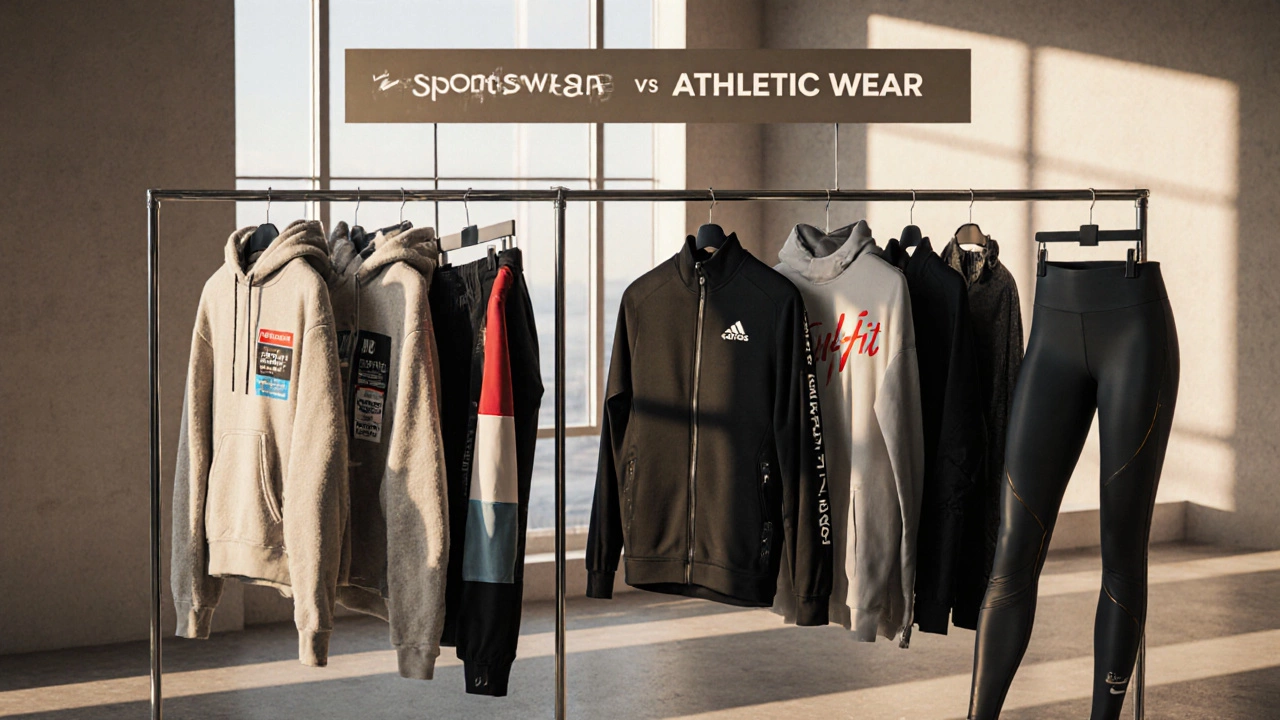Sportswear Definition – What It Really Means
When talking about sportswear, clothing designed for physical activity that balances performance and style. Also known as athleisure, it blends function with everyday wear. Activewear, the subset of sportswear built specifically for workouts and Performance fabrics, technical textiles that wick moisture and regulate temperature are key parts of the picture. Sportswear encompasses both high‑impact gear and casual pieces, and it requires performance fabrics to stay comfortable during movement.
Key Elements That Define Sportswear
First, the design focus is on mobility. Stretch panels, ergonomic seams, and a fit that follows the body’s range of motion are standard. That’s why activewear often uses leggings, joggers, and fitted tops – they let you move freely while keeping a polished look. Second, the materials matter. Performance fabrics like polyester blends, bamboo viscose, and moisture‑wicking nylon provide breathability and quick‑dry properties, making the outfit work on the gym floor and the street. Third, style plays a role. Athleisure has turned sport‑inspired silhouettes into mainstream fashion, influencing everything from office casual to weekend outings. The trend shows that comfort no longer means sacrificing style.
Sportswear also intersects with sustainability. Many brands now source recycled polyester and organic cotton, linking the activewear market with eco‑friendly initiatives. This connection means shoppers can pick pieces that perform well and reduce environmental impact. When you choose a jacket made from recycled fibers, you’re getting a performance layer that resists wind while supporting a greener supply chain. The sustainability angle enriches the definition of sportswear, turning it into a lifestyle choice rather than a pure function.
Another important aspect is the cultural crossover. Athleisure influences streetwear, and streetwear feeds back into sportswear designs. Designers borrow bold graphics, logo placements, and color blocking from urban fashion, then apply them to performance gear. This reciprocal relationship blurs the line between gym wear and everyday outfits, meaning you can wear a sleek compression tee to a coffee shop without looking out of place. The blend of functional tech and cultural relevance makes sportswear a dynamic, ever‑evolving category.
From a usage perspective, sportswear isn’t limited to workouts. It’s common in travel, where breathable fabrics and versatile cuts help you stay comfortable on long flights. It’s also popular in outdoor activities like hiking, where performance fabrics protect against weather while allowing freedom of movement. These practical applications illustrate that sportswear requires adaptable design, reinforcing the earlier point that mobility, material, and style are inseparable.
Understanding the term also helps you shop smarter. When a product labels itself as sportswear, look for the three pillars: stretch or ergonomic cut, technical fabric, and a design that can transition from activity to casual. If any pillar is missing, the item might be just a regular casual tee or a specialized gym outfit that won’t serve everyday purposes. This quick checklist lets you evaluate pieces without getting lost in marketing jargon.
Finally, the rise of digital fitness has expanded sportswear’s role. With at‑home workouts and virtual classes, people need gear that feels good in a small space yet performs for high‑intensity moves. Brands respond with lighter, quieter fabrics that don’t cling when you’re doing yoga, but still offer support for HIIT sessions. This shift shows that sportswear adapts to lifestyle changes, reinforcing the idea that it’s both a functional and cultural staple.
Below you’ll find a curated set of articles that dive deeper into each of these facets – from how many suits a man should own (a nod to classic wardrobe basics) to the latest trends in athleisure and performance fabrics. Whether you’re building a versatile gym wardrobe or looking for pieces that double as street style, the posts ahead give practical tips, real‑world examples, and fresh perspectives on the world of sportswear.
- Cleo Fairchild
- Oct, 19 2025
- 0 Comments
Sportswear: One Word or Two? The Definitive Spelling Guide
Discover whether "sportswear" is one word or two, see dictionary evidence, learn regional usage, and get a writer's checklist for correct spelling.
- Cleo Fairchild
- Oct, 10 2025
- 0 Comments
Sportswear vs Athletic Wear: Key Differences Explained
Explore the core differences between sportswear and athletic wear, covering purpose, materials, fit, style, and buying tips for everyday and performance use.

